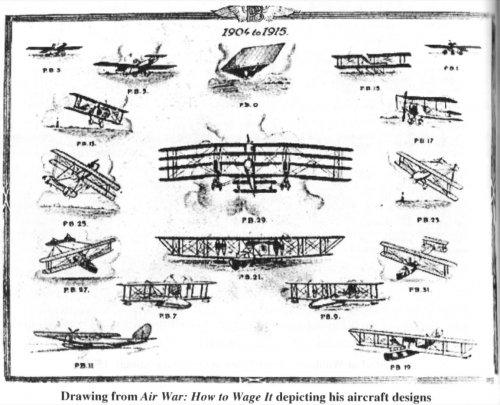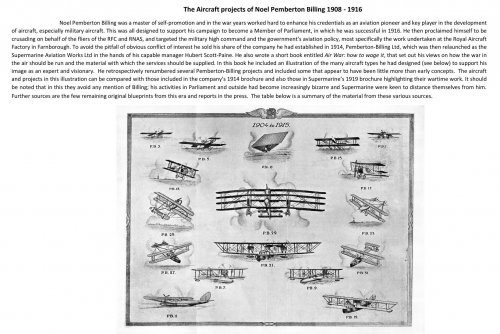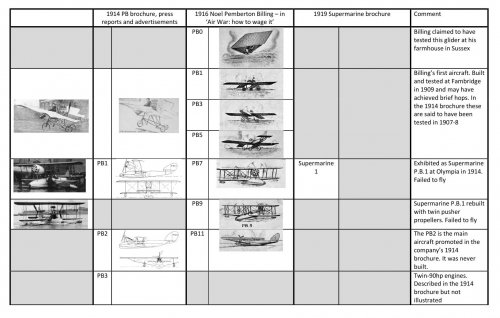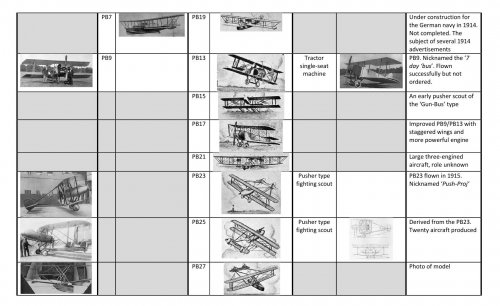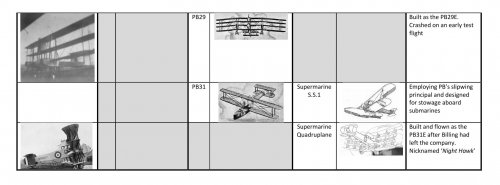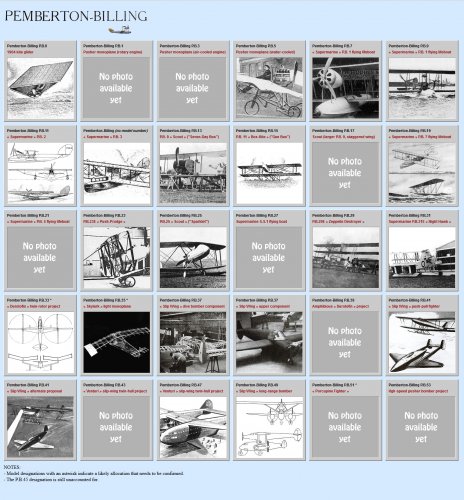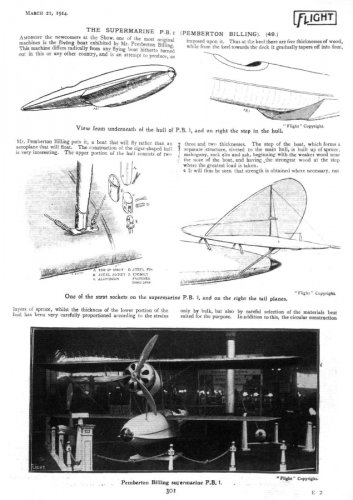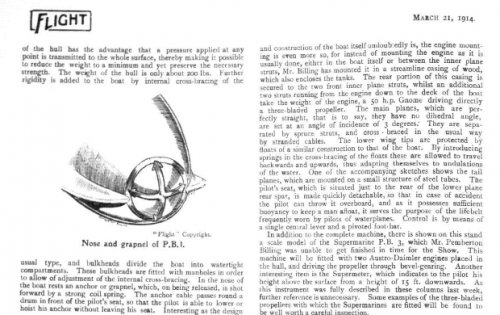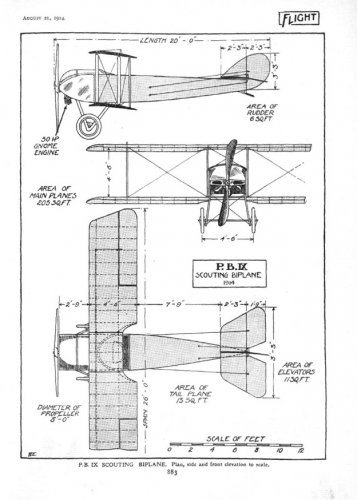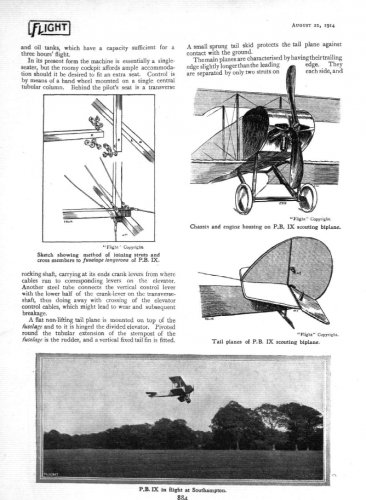Some notes, corrections and additions...
On the duplicate numbers above :-
P-B's first aircraft were un-numbered.The first design to be numbered, the P.B.1,
was the fifth design to be built.
Some time before September 1916, P-B revised his numbering scheme to include
these un-numbered designs. Thus, the P.B.1 became the P.B.7, and the P.B.9
became the P.B.13.
P.B.9. Re-numbered P.B.13 in new scheme. Known as the 'Seven Day Bus', as it
was designed and built in a week, although there is evidence that the wings were
from a pre-existing non-P-B type.
P.B.17. Improved P.B.9 [P.B.13] with staggered wings. It is unknown if it was
actually built.
P.B.19. Twin pusher flying boat powered by two hull mounted engines.
P.B.21. Larger, three engined flying boat.
P.B.23E. single seat pusher scout. Nacelle skinned with aluminium,hence
nickname of 'sparklet'. Also known as 'Push-Proj', short for 'Pusher -Projectile'.
Fitted with enlarged fins sometime in 1916. Suffered from a rearward C of G,
corrected in P.B.25 by sweeping wings back 11O.
P.B.25. 'series version' of P.B.23E. Wings swept back, see above, and nacelle
covering fabric.
"When the P.B.25 first appeared on RNAS aerodromes it was promptly given one
of the most ribald and unprintable nicknames bestowed on any aircraft of the period."
They were as dangerous as they were flimsy-looking, due to control problems, and were
effectively abandoned before seeing action.
P.B.27. Single seat flying boat. Wings and tail resembled those of the P.B.23E. Pusher
propeller, mid-gap mounted, driven by hull-mounted engine. Not built.
Putnam's 'Supermarine' describes it as 'submarine stowed'.
P.B.33. 1934. Durotofin VTOL, see link above.
P.B.35. 1936. Could be the 'Skylark' light aeroplane design, intended for low cost production.
Primary structure welded steel tube, and innovative control system. Not built.
P.B.37. Two-component 'slip-wing' dive bomber. Construction started in Feb 1940, but
suspended in June.
P.B.39. 1936. Durotofin-type amphibious VTOL. Known only from an illustration on a
christmas card...
P.B.41. 1940. Biplane slip-wing intended to allow standard fighters to perform long range
patrols. Both components would take off joined together, the slip wing pilot flying.
Once the enemy was sighted, the fighter would be released for combat, it's tanks still full
and it's pilot fresh. The slip-wing plane could also carry a searchlight for night interception.
P.B.43. Venturi. Enormous twin-hulled flying boat for transatlantic routes. Assisted
into the air by equally largr biplane slip-wing flying boat.
P.B.45. May be one of P-B's undesignated projects.
P.B.47. Alternative designation for P.B.43 above, but also used for high speed unarmed bomber.
Single seat, single engine and small wing. Tail mounted contraprops ala Mixmaster.
Assisted into the air by large, lightly loaded slip-wing plane.
P.B.49. 1940. Effectively a twin-engined version of the P.B.47. Crew 3.
P.B.53. High speed bomber. 2 crew and single engine. Tail mounted contraprops.
Undesignated projects. There exists a drawing of a Twin-boom, twin engine 'push-pull'
fighter, releasing from a biplane glider slip-wing.
'Tow fighter'. A small pusher fighter to be towed behind a tug/tanker aircraft, a modified bomber.
Intended for defence against night bombing of cities.
Once enemy bombers were sighted, the fighter would be released for combat.
A similar proposal was made to allow bombers to tow their own escort fighters.
Porcupine Fighter. Single seat fighter with heavy calibre guns pointing in various directions,not
just forwards. Pilot would aim using mirror sights.
Sources; Putnam's 'Supermarine', 'Air Enthusiast' 51, pp. 1-7, 'Warplanes of the First World War',
volume?? pp.58-70.
cheers,
Robin.

